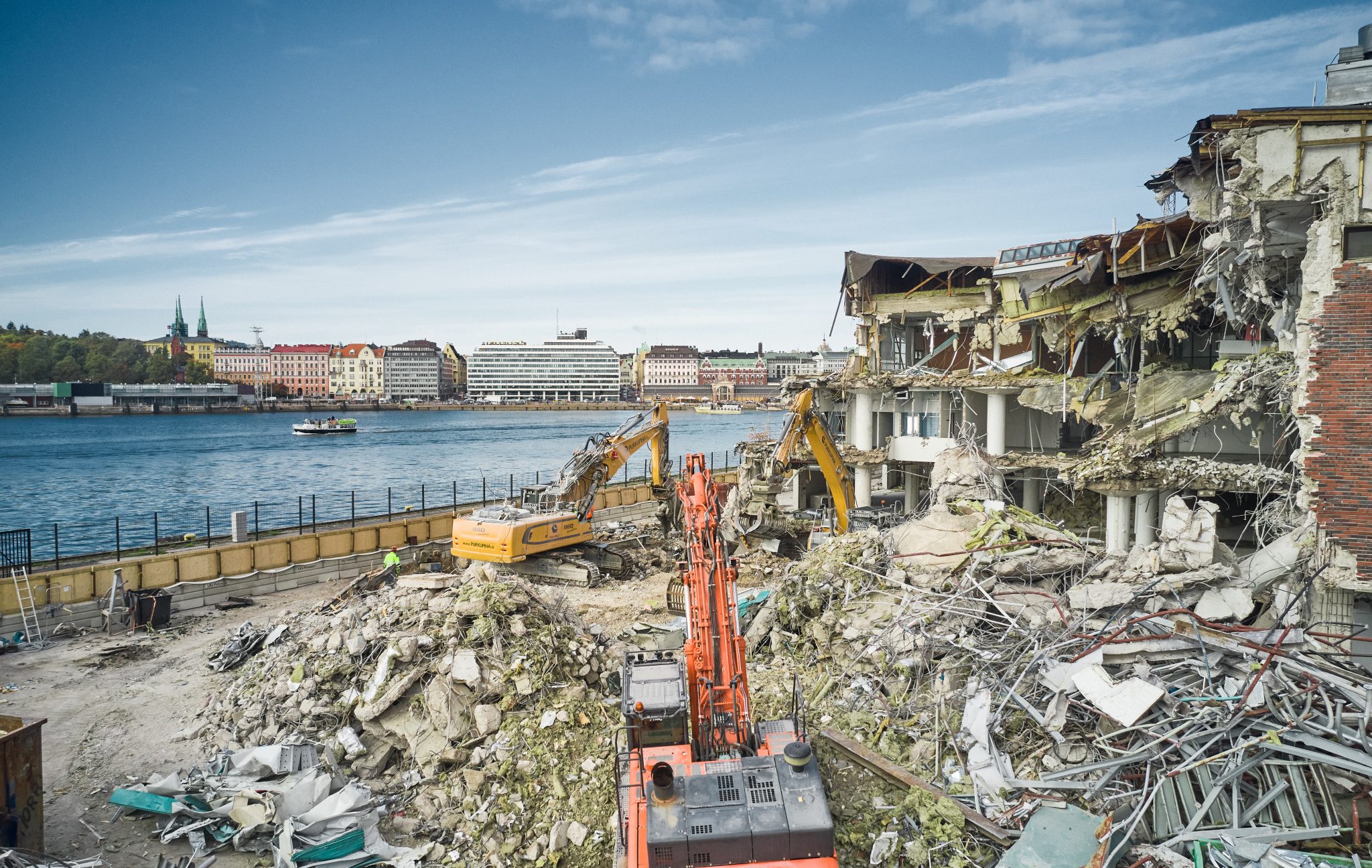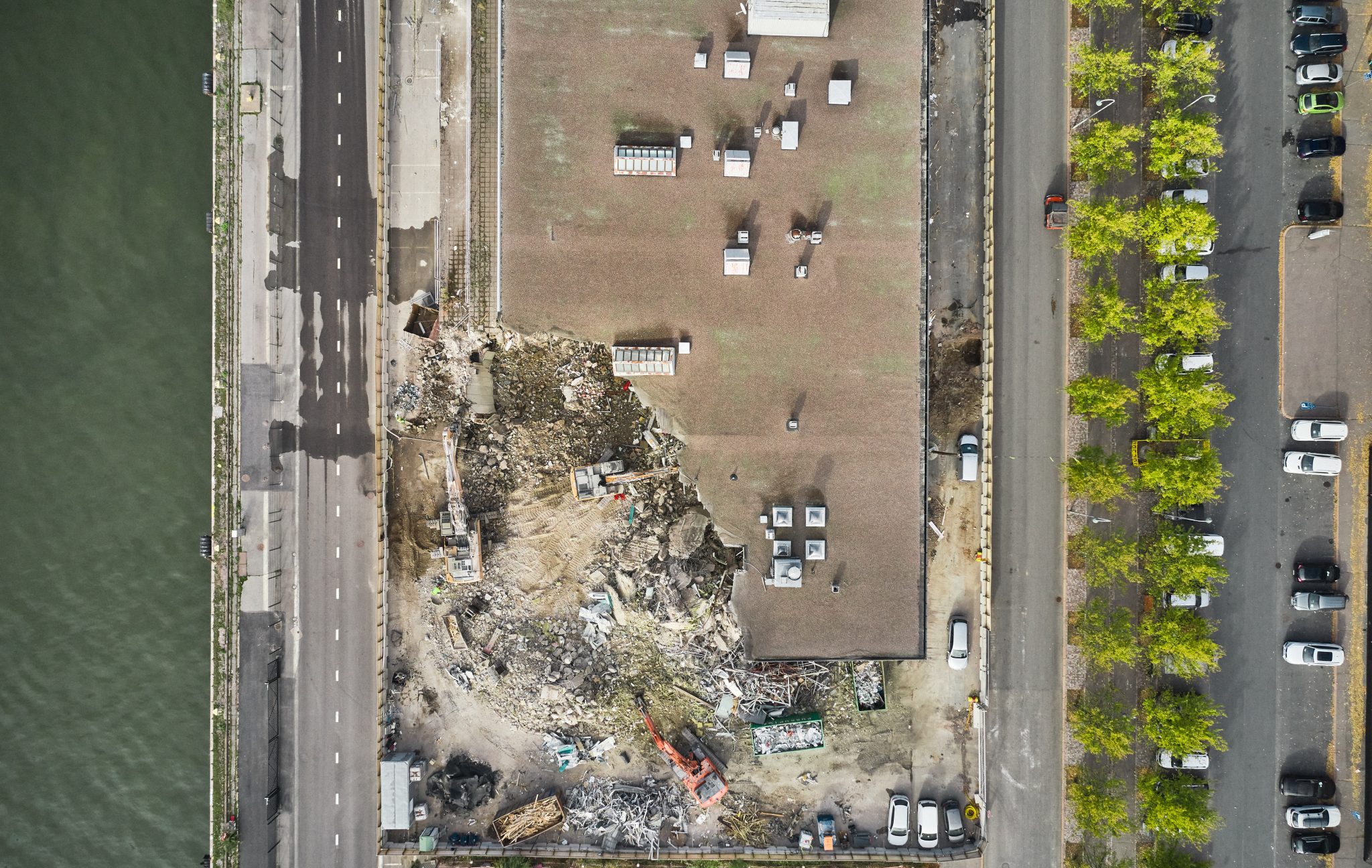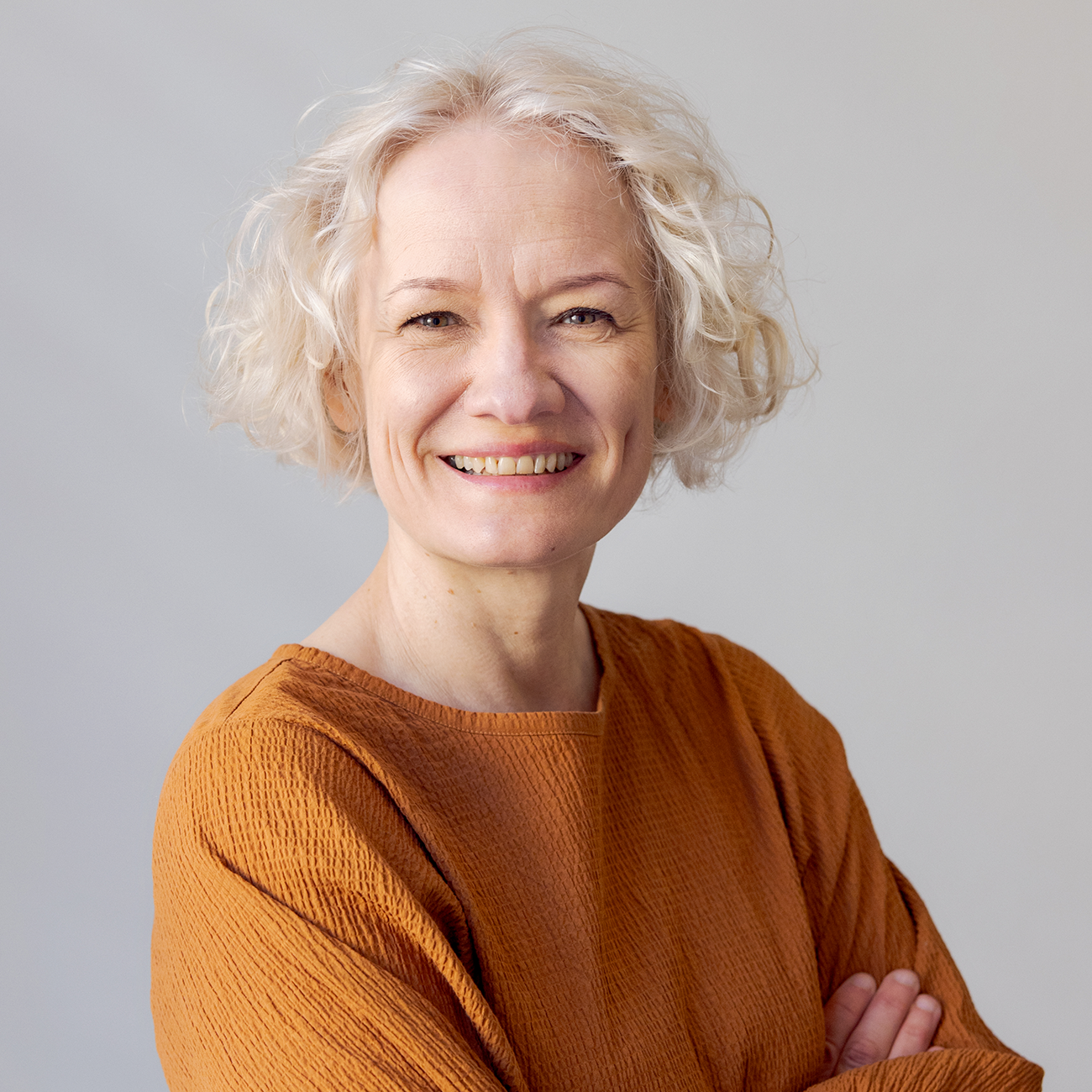Circular economy cluster launched with the emptying of over 10,000 square metres in Katajanokka
In a few years, Katajanokanlaituri 4 will be the site of Spring – a meeting place for city residents and service providers, a hotel and the headquarters of Stora Enso.

In 2021, this major construction project aiming for carbon-neutrality proceeded with the demolition of the existing harbour building, which occupied an area of over 10,000 square metres. As part of the effort, Helsinki’s cluster programme for circular economy carried out a pilot project with two companies that involved selling off movables and building materials from the building before the actual demolition. The aim of the pilot was to test the economic viability of this new operating model and gauge the demand for goods.
The emptying of an office room that has reached the end of its life usually means that the desks, chairs, cabinets and lights are simply sent off to a landfill site. When an entire office building with dozens or even hundreds of such rooms is emptied, the amount of waste generated is massive. Even seemingly empty premises can still house tens of thousands of kilos of movables when a demolition decision is made, after which everything must either be disposed of or handed over to new owners, if ones can be found.
Katajanokanlaituri 4 is one of the City of Helsinki’s pilot projects in its efforts to promote circularity. The last tenants of the old harbour building, completed in 1960 and located between the Viking Line terminal and Allas Sea Pool, vacated the building in summer 2021. A demolition permit had already been issued for the building before this, and the aim was to for the hall, which had a floor area of over one hectare, to be emptied in just three months.
Let us talk not of a recycling problem, but of new recycling opportunities
The objectives of the City’s recently launched cluster programme for circular economy are to increase innovation and business operations related to circular economy and reduce the carbon dioxide emissions generated as a result of the manufacture and use of materials. In doing so, the programme will also mitigate the overconsumption of natural resources and the weakening of biodiversity.
Major projects always involve multiple parties. This also holds true for Katajanokanlaituri 4, the demolition of which the City contracted out to external operators. The demolition contractor was Haahtela, while the inventorying of reusable materials before the demolition was carried out by Ytekki Oy in collaboration with Risain Oy, which handled the actual sales. The owner of the new building to be constructed is employment pension insurance company Varma, and the main users will be the City of Helsinki and Stora Enso, which will move its headquarters into the building.
The primary aim of the pilot project was to recover nearly 30,000 kilograms of movables for re-use elsewhere before the start of the demolition. As a result of the recovery effort, nearly 200 lots were ultimately put up for sale, with the number of individual items in each ranging from one to over a dozen. According to Project Manager Mira Jarkko from Helsinki’s cluster programme for circular economy, the City of Helsinki has previously sold movables from buildings to be demolished itself, but with this project the City wanted to test whether these kinds of sales activities could become a profitable business for companies. “I’m happy to be able to say that indeed they could,” Jarkko states.
Plenty of buyers found for used goods
The idea was to sell the usable goods found in the depths of the massive storage hall locally. Risain Oy determined what was to be sold, photographed and checked the goods and then put them up for sale on an online auction service, via which the goods ultimately found their new owners.
All in all, a total of 18,500 kilograms of construction materials and nearly 9,000 kilograms of movables from the building ended up being sold, primarily to companies. Chairs, cabinets, doors, miscellaneous electronics, forklift shelves, shredders, construction materials… The amount is notable from a recycling perspective, especially considering that no exterior building elements, such as windows or external doors, were sold. The sales were organised by recycling operator Risain Oy. Sirpa Rivinoja from Risain found the project highly enjoyable.
“This commission combined several positive factors that made the work very interesting. The City of Helsinki and the content and objectives of its cluster programme for circular economy aligned well with my company’s goals. We strive to achieve as high a reuse rate as possible in all of our commissions,” Rivinoja says.

Digital sales platforms reduce costs
Katja Lehtonen from Ytekki Oy, who served as a project manager on the project, pointed out to the City of Helsinki very early on that Katajanokanlaituri 4 would be ideal for piloting the sale of movables before demolition. Although the fact that the building would be demolished had been known for years, the amount of time available for inventorying materials for reuse, photographing the goods to be sold, selling them and clearing them out of the building was only three months. Despite the strict timetable, Lehtonen is pleased with the results, which speak highly in favour of these types of operating methods.
“I learned a great deal on this project myself, especially about selling goods online. It was very interesting to note how high the demand for all kinds of materials is and how much untapped potential there is for this type of recycling on these digital platforms. This was a great start and opened people’s eyes to how much could be done. Utilising these types of online platforms as sales channels can be especially effective in construction to avoid unnecessary transportation and temporary storage. They make it possible for products to be seen by hundreds of thousands of people at once without anyone having to travel anywhere specifically to check them out,” says Lehtonen.
Katja Lehtonen praises the City for its attitude towards the rapid-paced project and the professionals who contributed to its success. A pilot project is a pilot project, after all, and in the future there will hopefully be more time to prepare for these types of opportunities.
“With even a few months more time, we could have also attempted to sell the windows, for example. We could have recycled more than we did, as there was interest in goods that we did not put up for sale, too, such as doors and windows.”
Sirpa Rivinoja from Risain Oy is also very pleased with the project overall, but due to the tight schedule some usable materials could not be put up for sale.
“The Katajanokanlaituri site was visited by representatives from companies aiming to make construction more sustainable, who were interested in various glass elements suitable for dividing spaces, windows, brick walls and concrete support structures, among other things. The site could have yielded such elements, but unfortunately they were left for the demolition company to process.”
In with the new
The now empty Katajanokalaituri 4 will spring to new life in 2024 when the construction of the new building, Spring, is completed. This new flagship of wood architecture is designed by Anttinen Oiva Arkkitehdit Oy and won the architectural competition organised for the new building in 2020.
In addition to the headquarters of Stora Enso, the new building, spanning more than 16,000 square metres, is planned to house a hotel and café, restaurant and conference facilities. The aim is to make Spring a completely carbon neutral building and a showcase of Finnish wood construction.
